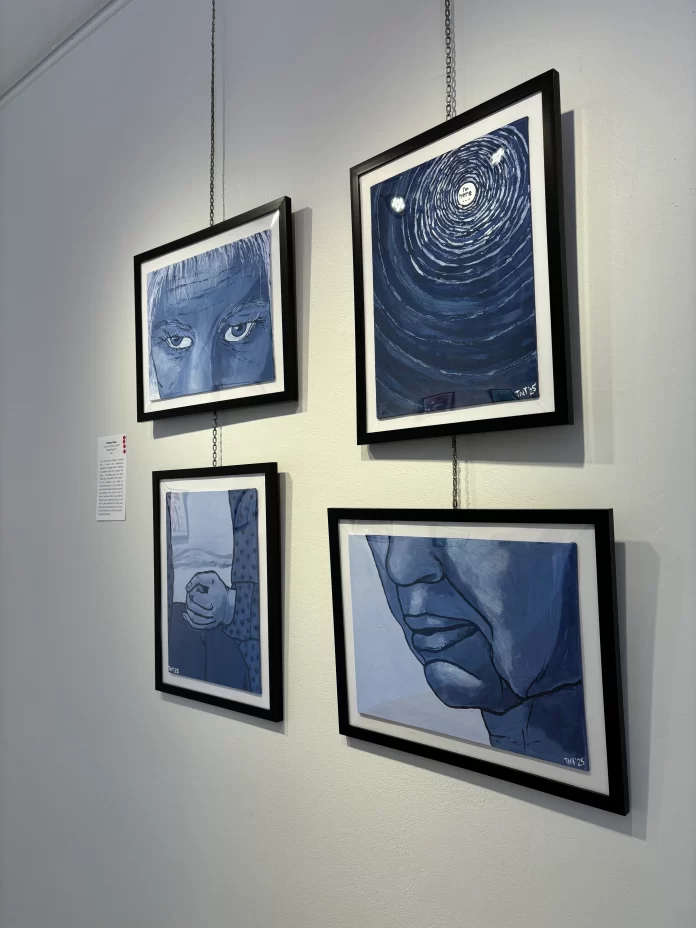The theme of the exhibit, Beyond Diagnosis, inspired work from a wide range of creators all over the province. Each canvas hung in the gallery highlighted an artist’s experience with either being diagnosed with epilepsy or caring for someone with the condition. Topics explored through the exhibit’s artwork included medication, misdiagnosis, internal battles, outward appearances, and everyday challenges of the disorder.
Epilepsy is a neurological disorder which is diagnosed when an individual experiences a frequent number of repeated seizures. The centre’s online resource guide explains that seizures can come with a number of indicators.
“A seizure may consist of a brief stare, an unusual movement of the body, breathing difficulties, loss of bladder or bowel control, an odd sensation, a change in consciousness, or a convulsion (muscle contractions).”
Rupinder Bhatti, program manager at C.E.S.E.B.C. and a UFV alum, said that the centre’s intention for the exhibit was to shine a light on the lives of those impacted by epilepsy.
“We wanted people [with epilepsy] to really understand that they’re just as valuable as everybody else around them, and they have the same strength, if not more, and they can overcome anything. And that’s what we want to feature. We want people to feel like they belong, that they matter, and that their story matters.”

While most pieces incorporated some purple — the official colour representing epilepsy — many different colours were also seen in the gallery’s artwork. Bhatti said that the purpose of the exhibit’s title was to showcase the condition as a wide spectrum, since there are many different kinds of epilepsy.
When asked about some prevalent misconceptions surrounding epilepsy, Bhatti described the one that she believes to be the most common.
“That’s one of the biggest misconceptions, [that] ‘it can’t happen to me.’… But like I said, anybody with a brain can have a seizure.”
Bhatti explained that the idea of an art exhibition came from the centre’s desire to raise awareness and eliminate the stigma surrounding epilepsy in a different way than they’d done previously.
“Instead of redoing what we do every year, which is normally a walk at Mill Lake Park … we were like, ‘hey, let’s switch it up this year and do something different.’”
If you or someone you know is struggling with epilepsy, Bhatti encourages paying a visit to the centre to see what kinds of support might be available for you.
“If [you] just need someone to talk to for a couple of minutes, [you] can drop by our office too … Our door is always open for everybody.”

Meghan Dahl, the gallery and events manager at the Kariton, spoke on the variety of artists in the exhibit. Since the gallery usually only displays art from within the Fraser Valley, Dahl explained that it was nice to be able to feature artists from all over British Columbia.
“Art is for everyone, and so at the Kariton, we really want to connect as many people [as possible] with art.”
And if you’re looking for something to do now that the semester’s over, Kariton Art Gallery will be partnering up with the Central Fraser Valley Graphic Guild for their next exhibit, starting on May 3. They are open from 11 a.m. — 3 p.m., Thursday through Saturday. Dahl encourages everyone to check out the gallery.
“We’re free. We’re right in the park, we have new things all the time, and we support local artists [taking] their first steps of their career.”


